Llangennech is a village on the outskirts of Llanelli, on the western margin of the River Loughor, and was once an important area for coal mining. The village is home to a large Royal Naval Base, but this has sadly been mothballed. The Village Church is dedicated to St. Gwynnog, and contains the Village War Memorial, as well as a separate plaque in memory of Harding Thomas Bevan. The memorial has plaques which commemorate the men of the village who fell during both world wars, and the one man who fell during the Korean War. Photographs of the memorial have recently been kindly sent in by Malcolm Spencer.
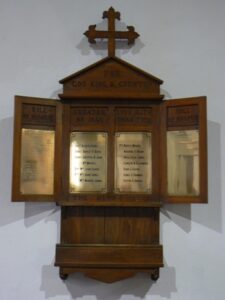
The Great War, 1914-1918
Gwilym Banks, Private, 13136, Welsh Regiment. Gwilym was born at Llangennech early in 1888, the son of William and Mary Banks. He worked at the Gelly prior to the war and resided in Penceiliogi, Llwynhendy. Gwilym enlisted at Llanelli into the 9th Battalion, Welsh Regiment, which was attached to 58 Brigade, 19th (Western) Division. The Division moved to France during July 1915, and moved to positions near Loos, where it took part in the opening attack of the Battle of Loos on 25 September 1915. The following year the Division moved to the Somme, where it took part in the second wave of the attack on Ovillers-La Boiselle on 1 July, capturing the village at heavy cost. It then fought through the Somme Battles of Pozieres and the Ancre in 1916. In 1917 the Division moved north to Ypres, taking part in the Battle of Messines, and throughout the Third Battle of Ypres. During December 1917 the Division moved into the Ribecourt Sector. Gwilym was killed in action here, oddly while the battalion was out of the line, training at Phipps Camp, Haplincourt, on 26 February 1918, aged 29. He is buried in Metz-En-Couture Communal Cemetery British Extension, France. Gwilym is not commemorated locally.
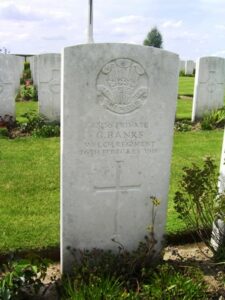
Harding Thomas Bevan, Private, 4616, Honourable Artillery Company (Infantry). Harding was the son of Daniel and Margaret Bevan, of Talywern, Llangennech. He enlisted at Armoury House, London on 27 October 1915 into the Honourable Artillery Company, which was attached to 22 Brigade, 7th Division. He embarked for France on 29 June 1916, and joined the battalion on the Somme on 7 July 1916, less than a week into the Battle of the Somme. Harding was killed later in the battle, during the Battle of the Ancre, on 15 November 1916. He was 32 years old. He probably had a grave at some time, as his personal effects were returned to his parents, but like so many other men who died on the Somme, his grave was lost, and Harding is commemorated on Pier and Face 8A of the Thiepval Memorial, France.
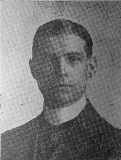
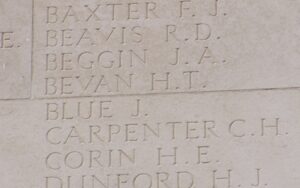
Ernest Frederick Bush, Sergeant, 19993, Welsh Regiment. Ernest was born at Windsor, the son of George and Margaret Bush, of 59, Victor Road, Windsor. He worked for the Traffic Department of the Great Western Railways at Llangennech, and at the outbreak of war was one of the original enlistees into the 15th Battalion, Welsh Regiment, known as the Carmarthen Pals. The battalion formed at Rhyl over the winter of 1914/15, before moving to Morn Hill Camp, Winchester in the summer of 1915, where it became attached to 114 Brigade, 38th (Welsh) Division. In December the division moved to France, taking up the lines at Fleurbaix, where the men were to be initiated into trench warfare. On 25 January 1916 the 15th Welsh were in the lines at Croix Barbee when Ernest was killed by a sniper. He was 23 years old, and is buried at St. Vaast Post Military Cemetery, Richebourg-L’Avoue, France.
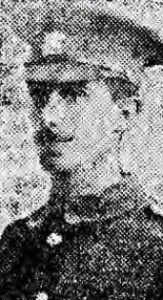
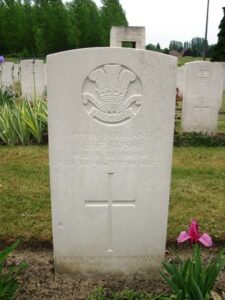
Evan James Close, Private, 201168, Welsh Regiment. Evan was the son of John and Gwen Close, of Bridge Street, Llangennech. He enlisted at Llanelli into the 1/4th Battalion, Welsh Regiment, which was the local territorial unit, attached to 159 Brigade, 53rd (Welsh) Division. The Division embarked from Devonport for the Mediterranean in July 1915, arriving at Mudros by 5 August 1915. From here they moved to Gallipoli, landing on 9 August. Here the Division was immediately thrown into action, and spent the next few days in isolated pockets, fighting against a Turkish counter-attack during the Battle of Sari Bair, and then at the Attack on Scimitar Hill. The Division remained here throughout the coming months, and suffered severe losses in manpower strength during the great November 1915 blizzard on Gallipoli, when its total strength was reduced to less than that of a full-strength Brigade. On 11 December 1915 the Division was evacuated to Mudros, and by 23 December 1915 were moved to Egypt. They remained on the Suez Canal Defences for the next twelve months, and in early 1917 moved into Palestine, where they remained for the duration of the war, fighting at the Battles of Gaza, and successfully capturing Jerusalem. Evan was killed during ensuing operations in the Jordan Valley on 9 March 1918. He was 23 years old, and is buried at Jerusalem War Cemetery, Israel. His brother William had been killed just eight months previously.
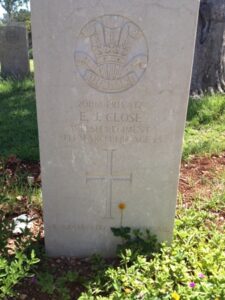
William John Close, Private, 20500, Welsh Regiment. William was the eldest son of John and Gwen Close, of Bridge Street, Llangennech. He was one of the early enlistees into the 15th Battalion, Welsh Regiment, which was known as the Carmarthen Pals. The battalion formed at Rhyl over the winter of 1914, and in the summer of 1915 moved to Morn Hill Camp, Winchester, where it became attached to 114 Brigade, 38th (Welsh) Division. The Division had landed in France during December 1915 and had spent their first winter in the trenches near Armentieres. In June they marched south to the Somme, where they were tasked with the capture of Mametz Wood. The attack on the wood began on 7 July, but met with fierce resistance, and it took until 14 July to totally clear the wood. The Division suffered terrible casualties at Mametz, and were taken out of the line, and moved to Ypres to rebuild. Here they fought at the Battle of Pilckem Ridge, and it was during this opening battle that William was wounded. He died of his wounds the following day, on 1 August 1917, aged 26, and is buried at Bard Cottage Cemetery, Belgium. His younger brother Evan was killed in Palestine eight months later.
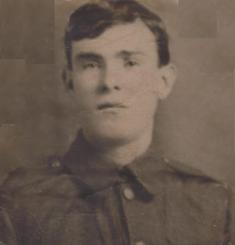
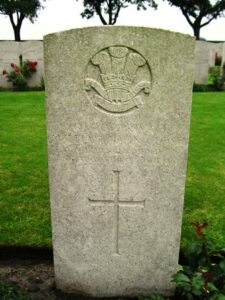
Samuel Iestyn Davies, Private, 137593, Royal Army Medical Corps. Iestyn was the son of Samuel and Sarah Ann Davies, of Llwyn Celyn, Maes Street, Llangennech. Very little is known of his service, but he initially served with the 59th Training Reserve Battalion at Kinmel Park before being posted to the Royal Army Medical Corps in April 1918. Iestyn survived the war only to die of influenza at the 2nd Western General Hospital, Manchester on 27 January 1919, aged 19. He is buried at Llangennech (Bethesda) Welsh Congregational Chapelyard.
Llewellyn Benjamin Elsmere, Private, 30455, Kings Own Royal Lancaster Regiment. Llewellyn was the son of Benjamin J. and Anne Elsmere, of Hill Park, Hendry Road, Llangennech, and enlisted at Carmarthen into the army. He was posted to the 1st Battalion, King’s Own Royal Lancaster Regiment, which was attached to 12 Brigade, 4th Division. The Division had been in France since the Battle of Le Cateau in August 1914, and had fought at every major battle thereafter. In the summer of 1917 the Division was at Ypres, where it took part in the Passchendaele Offensive. Llewellyn was killed in action during the Second Battle of Passchendaele on 3 November 1917. He was 31 years old, and is buried at Duisans British Cemetery, Etrun, in Grave V. C. 58.
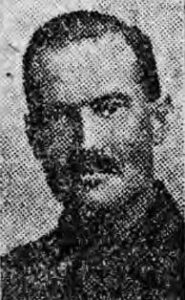
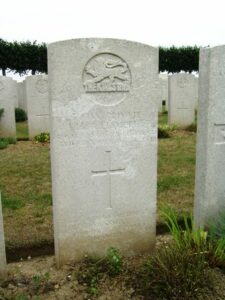
Sidney Morley Evans, Private, 21553, Royal Welsh Fusiliers. Sidney was born at Llangennech, the son of William and Elvira Evans. The family later moved to Pontardulais. Sidney worked at London before the war and married Kate Edwards in 1913, and the couple had a son, Owen, the following year. He enlisted at London into the army, joining the 11th Battalion, Royal Welsh Fusiliers. Early in September 1915 the battalion moved to France, where it was part of 67 Brigade, 22nd Division. On 30 October 1915 the Division sailed from Marseilles to Salonika, where it remained for the duration of the war. Sydney was killed in action there during the Battle of Doiran, on 18 September 1918, aged 36. He is commemorated on the Doiran Memorial, Greece. He is not commemorated on the Llangennech Memorial.
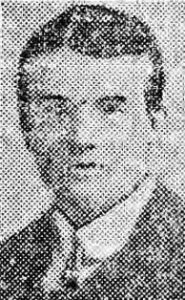
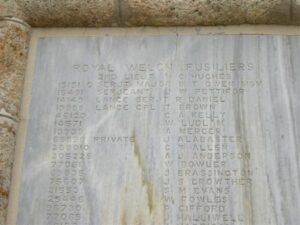
Brinley Jenkins, Private, 69634, Royal Welsh Fusiliers. Brinley was born at Llangennech, the son of Philip and Margaret Ann Jenkins. By 1911 the family had moved to The Bungalow, Graigfawr, Pontarddulais. Brinley enlisted at Swansea into the 8th Battalion, Royal Welsh Fusiliers, which was attached to 40 Brigade, 13th (Western) Division. During July 1915 the entire Division landed on Gallipoli, and took part in several bloody battles there. During January 1916 the men were evacuated to Egypt, and from there marched into Mesopotamia. It remained here for the remainder of the war, helping to free this ancient country from centuries of Turkish rule. Brinley was one of many men to become ill in this inhospitable country, and died on 15 October 1918, aged 21. He has no known grave, and is commemorated on Face 4 of the Kirkee 1914-1918 Memorial, India. He is not commemorated on the Llangennech Memorial.
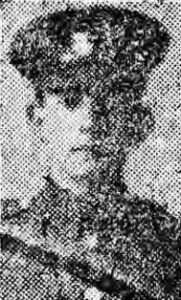
Owen Jenkins, Lance Corporal, 35538, Machine Gun Corps. Owen was born at Llangennech, the son of John and Mary Jenkins. The family later moved to Cwyn-yr-Awel, Gowerton, Swansea. Owen had gained his B.A. at Aberystwyth, and was a Master at Abertillery prior to the war. Owen had enlisted at Abertillery on 10 December 1915 into the Royal Welsh Fusiliers. On 31 July 1916 Owen sailed to France, and was posted to the 15th Company, Machine Gun Corps, which was attached to the 5th Division. The Division was on the Somme in the summer of 1916, and it was here, during the Battle of Guillemont, that Owen was killed on 5 September 1916, aged 30. He is buried at Delville Wood Cemetery, Longueval, France, in Grave XXIV. K. 2. His brothers Oswald and Gwyn were also educated at Aberystwyth, and were commissioned as officers during the war. He is not commemorated on the Llangennech Memorial.
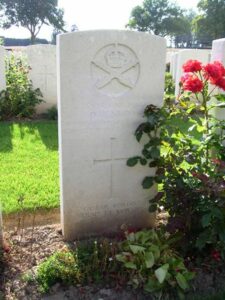
Griffith Brynarfryn John, Corporal, 106504, Royal Engineers. Griffith was the third son of John and Catherine John, of Glanllwchwr House, Llangennech. He was educated at Aberystwyth University before gaining his BSc at London, and became a teacher at Colne Secondary School. Griffith then joined the staff at Slough Secondary School in 1912, where he was Science Master. On 15 August 1915 Griffith enlisted at Chatham into the Royal Engineers, and landed in France on 17 August 1915 with the 187th Special Company, Royal Engineers, one of the specialists in gas warfare. He was wounded soon after and returned to England on 27 October 1915. Griffith was discharged on medical grounds, and took up a post as a chemist at Fields Munitions Works, at Rainham, Essex. On 14 September 1916 a fire set off a store of explosives in the works, which in turn caused the release of poison gas. Griffith was killed that day while attempting to save the lives of four women workers who had been trapped inside the works. Griffith is not commemorated by the CWGC, as he was a civilian worker at the time of his death, and civilian casualties from the Great War are not commemorated as war dead.
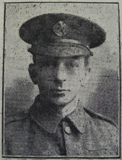
Hugh Graham John, Second Lieutenant, Northumberland Fusiliers. Hugh was the son of Dr. Hugh John and Margaret John, of Bronygarth, Llangennech. Hugh had originally gained a commission into the Northampton Regiment, before being posted to the 1st Battalion, Northumberland Fusiliers, which were attached to 9 Brigade, 3rd Division. The Division had been on the Western Front since August 1914, and had fought in the retreat from Mons. The Division was then moved north to Flanders, and took part in the Battle of Messines, where Units of 4th Division took part in the famous Christmas Truce while they were still in this area, in trenches near Ploegsteert Wood. In June 1915 the Division took part in the First Attack on Bellewaarde, and it was here on 16 June 1915 that Hugh was killed, while attacking near Railway Wood. Hugh was just 19 years old, and is commemorated on Panel 36 of the Ypres (Menin Gate) Memorial, Belgium.
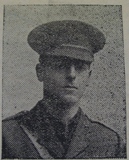
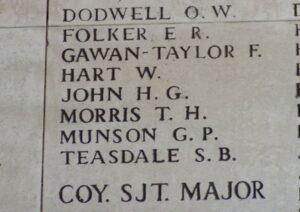
William Morris Jones, Private, 5562, Welsh Regiment. William was born at Llandeilo, the son of Thomas and Mary Jones. By 1911 the family was residing at Bridge Street, Llangennech. William served with the 1/4th Battalion (Carmarthen), Welsh Regiment. The Battalion formed at the outbreak of war, and became attached to 159 Brigade, 53rd (Welsh) Division, landing at Gallipoli in August 1915. Here, the fresh troops were thrown into a series of suicidal assaults over the coming days, against strongly defended Turkish positions. William was killed here during the attack on Scimitar Hill on 10 August 1915, aged 17. He is commemorated on Panel 140-144 of the Helles Memorial, Gallipoli.
Hugh Cecil Lewis, Private, 63175, Royal Welsh Fusiliers. Hugh was the son of John and Eliza Lewis, of Brynshaffre Villa, Llangennech, Llanelli. Hugh was educated at Llandovery between 1909 and 1912 and on leaving School Hugh worked for his father and his uncle in the family timber Business, Lewis Bros., Llangennech. Hugh enlisted at Cardiff into the 9th Battalion, Royal Welsh Fusiliers, which was attached to the 58th Brigade, 19th (Western) Division, and at the beginning of 1917, Hugh joined his Battalion, and was sent to train at Affringues in August 1917. The Division was set to take part in the Battle of Passchendaele, and in September 1917, his Battalion took part in the Battle of Menin Road, warding off a German counter-attack despite heavy shelling near Hessian Wood. Hugh was shot in the head, suffering a fractured skull, and was brought to No 2 Casualty Clearing Station, where he died of wounds on 8 October 1917. He was 24 years old, and is buried at Outtersteene Communal Cemetery Extension, Bailleul, in Grave I.D.48.
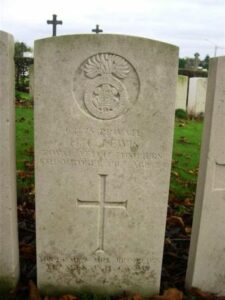
William John Lewis, Acting Corporal, 10479, Welsh Regiment. William was brought up with his uncle and aunt, William and Mary Lewis, at Cwmmingbwch Fach, Llangennech. He had enlisted at Llanelli prior to 1911 into the 1st Battalion, Welsh Regiment, and was in India with the battalion at the outbreak of war. The battalion was recalled to Britain, where it joined 84 Brigade, 28th Division, and moved to France in January 1915, where it moved into the line near Ypres. William was killed at Ypres whilst rescuing his Company Officer, who had been wounded while retreating from a German assault on 27 March 1915, aged 24. He is buried at Dranouter Churchyard, Belgium, in Grave II.B.19.
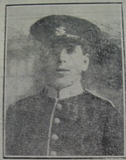
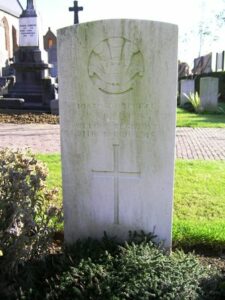
Gilbert John (Bertie) Moore, Private, 19769, York & Lancaster Regiment. Bertie was the son of Moses and Hannah Moore, of Station Road, Llangennech. He enlisted at Doncaster into the Yorkshire Light Infantry. He was then posted to the 10th Battalion, York and Lancaster Regiment, which was attached to 63 Brigade, 37th Division. Late in July 1915 the Division landed in France and concentrated near St Omer. They then moved south, where they took part in the Attack on the Gommecourt Salient, during the first phase of the Battle of the Somme. Bertie was one of many casualties suffered by the Division here. He was evacuated back to Britain for treatment, but sadly died of his wounds in London on 25 August 1916, aged 26. He is buried at Llangennech (St. Cennych) Churchyard.
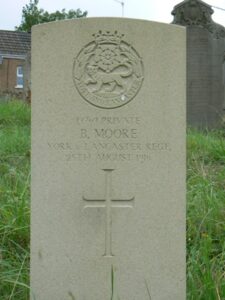
William Morris, Corporal, 20749, Welsh Regiment. William was born at Rhosamman, and lived at Llangennech prior to the war. He enlisted at Ammanford into the 15th Battalion, Welsh Regiment, which was known as the Carmarthen Pals. The Battalion trained at Rhyl before moving to Winchester in the summer of 1915, where it became part of 114 Brigade, 38th (Welsh) Division, and landed in France on 2 December 1915. The battalion took the line near Fleurbaix, where it was initiated into trench warfare, before moving to the Somme in June 1916. Between 7 and 11 July 1916 the 38th Division had taken part in heavy fighting during the capture of Mametz Wood. The division was then moved to Hebuterne for a month, before heading to positions north of Ypres, on the Canal Bank at Boesinghe. William was wounded here at the end of February 1917. He was brought to the Casualty Clearing Station at Mendingham where he died of his wounds on 27 February 1917. He is buried at Mendinghem Military Cemetery, Belgium, in Grave II. B. 5.
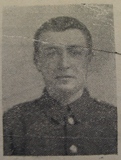
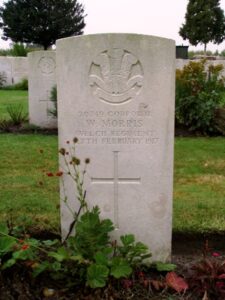
Thomas Rafferty, Private, 57759, Cheshire Regiment. Thomas was the son of Patrick and Catherine Rafferty, of Cilgerran. Prior to the war he lived at Llangennech. He enlisted at Cardiff into the Army on 15 September 1916 and was posted to the Liverpool Regiment. Thomas became ill soon after arriving in France, and being not physically up to service in the infantry was posted to the 20th Battalion, Labour Corps, which formed part of the 60th Labour Company in France. Thomas took ill during the winter of 1916/1917 and was sent to the Base Hospital at Rouen for treatment, but he sadly died there on 26 January 1917, aged 32. Thomas is buried at St. Sever Cemetery Extension, Rouen, France. He is not commemorated on the Llangennech Memorial.
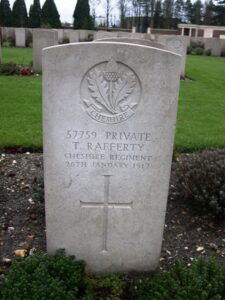
David John Richards, Private, 15067, Monmouthshire Regiment. David was born at Llangennech, the son of Evan and Ann Richards. The family had moved to 45, Bishton Street, Newport by 1901. David enlisted into the South Wales Borderers on 4 September 1914. He married Winifred Sarah John on 1 February 1915 prior to going to France, where he joined the 2nd Battalion, Monmouth Regiment, which had been in France since November 1914. In May 1916 the battalion became Pioneers to the 29th Division, and moved to the Somme, where it fought at the Battles of Albert and Le Transloy, suffering heavy casualties. They remained there over the winter, and it was on the Somme on 28 January 1917 that David was killed. He was 22 years old, and is commemorated on Pier and Face 4A of the Thiepval Memorial, France. He is not commemorated on the Llangennech Memorial.
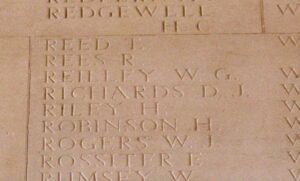
Lewis John Thomas, Private, 57964, Royal Welsh Fusiliers. Lewis was the son of Mary J Thomas, of Box Farm, Llangennech. He enlisted at Llanelli into the Welsh Regiment, and was posted to the 9th Battalion, Royal Welsh Fusiliers, which was in France attached to 58 Brigade, 19th (Western) Division. The Division had fought at the Battle of Loos in 1915, and on the Somme in 1916. In 1917 they fought at Messines and Passchendaele, before being moved to the Somme, taking the line near St. Quentin. The division was hit here by the German Spring Offensive of 21 March 1918, and suffered terrible casualties while trying to stem the German advance. It was then sent to Flanders to rebuild, but was hit again by a fresh German Offensive on the Lys. Lewis was wounded here, and died of his wounds at a casualty clearing station on 1 May 1918, aged 27. He is buried at Esquelbecq Military Cemetery, France, in grave II. A. 16.
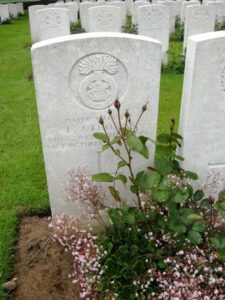
World War Two, 1939-1945
Herbert Thomas Hinkin Arnold, Lieutenant, 247136, Royal Welch Fusiliers. Herbert was born in 1922 in Llangennech, the son of Walter and Lilian G. Arnold, later of Pontardulais, Glamorgan. After receiving his education at Llandovery College, he attended Oxford, gaining his B.A., and being awarded a Blue for association football. At the outbreak of war he joined the Army, being commissioned into the Royal Welch Fusiliers. Herbert was attached to the 2nd North Staffordshire Regiment, which was part of the Allied force in Italy, when he was killed on 23 September 1944. He was 22 years old, and is buried at Florence War Cemetery, Italy.
Thomas Elwyn Bennett, Private, 3910289, South Wales Borderers. Elwyn was born around March 1919, and served during the war with the 2nd Battalion, South Wales Borderers. The battalion was the first of the regiment to fight during the war, taking part in the Norway campaign. It then became the only Welsh unit to land in Normandy on D-Day, 6 June 1944, and took part in the resulting fighting in Normandy, and the drive through Northern France into Holland and Germany. Elwyn had been discharged due to medical grounds from the South Wales Borderers after the Norway campaign, and after a period on Home Service at Omagh, worked at the Royal Naval Stores Depot at Llangennech as a Clerk. He married Elizabeth Irene Lee around December 1945. Elwyn survived the war, but died of pulmonary tuberculosis on 6 June 1947, aged 28. He is buried at Llangennech (Bethesda) Welsh Congregational Chapelyard. Thomas is not named on the Llangennech Memorial.
Claude Venables Clarke, Sergeant (W/OP/ AG), 1585274, Royal Air Force Volunteer Reserve. Claude was born at Llangennech in 1922, and served as a Wireless Operator/ Air Gunner with 57 Squadron, Royal Air Force, which was a heavy bomber unit, equipped with the Avro Lancaster. Just before midnight on the night of 19 February 1944, Claude took off aboard Lancaster DX-E, Serial ND503 from RAF East Kirkby, bound for Leipzig. During the early hours of the following morning, 20 February 1944, the Lancaster was brought down after being attacked by flak and German night fighters, and crashed at Volkse, near Gifhorn, killing all bar one of her crew of eight men. Claude was 21 years old when he died that day, and is buried alongside his former crew-men at Hannover War Cemetery, Germany.
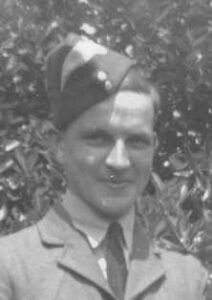
David Edward Clement, Aircraftman 2nd Class, 1417979, Royal Air Force Volunteer Reserve. David was the son of William and Elizabeth Clement, of Llangennech. He served with 177 Squadron, Royal Air Force, which was equipped with the Bristol Beaufighter VIC, based at Phaphamau, in India. David died in India, aged 35, on 28 May 1943. He is buried at Delhi War Cemetery, India.
Ivor John Davies, Private, 3969278, Hampshire Regiment. Ivor was the son of Oswald Benjamin and Lizzie Emma Davies, of Llangennech. He served with the 2nd Battalion, Hampshire Regiment. The battalion had fought with the BEF during the retreat to Dunkirk in 1940. On 11 November 1942 they sailed for North Africa, where they took part in Operation Torch, the Allied landings at Tunisia. In May 1943, after the fall of Tunis, the battalion joined 128th Infantry Brigade, and took part in the landings at Salerno, and saw heavy fighting after landing on 9 September 1943. Ivor was killed fighting in the hills around Salerno on 25 September 1943. He was 24 years old, and is buried at Salerno War Cemetery, Italy.
Thomas Elwyn Edwards, Sergeant, 1312326, Royal Air Force Volunteer Reserve. Thomas was the son of James Thomas Edwards and Catherine C. Edwards, of Llangennech, and the husband of Dorothy B. Edwards, of Llangennech. He served with 57 Squadron, Royal Air Force, which was equipped with the Avro Lancaster I, based at RAF Scampton. On 9 November 1942, Thomas was aboard a Lancaster which formed part of a 213 bomber raid over Hamburg. Twenty-six fires were caused in the city by the bombing, but fifteen bombers were lost during the mission. Thomas was aboard one of the missing aeroplanes that day. He was 21 years old, and is buried at Becklingen War Cemetery, Germany.
Harry Aldwyn Evans, Driver, 260749, Royal Army Service Corps. Harry was the son of Luther Emlyn Evans and Elizabeth Ann Evans, of Llangennech. He served as a Driver with the Royal Army Service Corps, and had been posted to the Middle East. Little else is known of Harry, but he died in Iraq on 25 October 1941, aged 20, and is buried at Baghdad (North Gate) War Cemetery, Iraq.
Iorwerth Griffiths, Fourth Engineer Officer, Merchant Navy. Iorwerth was the son of John and Sarah Ann Griffiths, of Llangennech. He served with the Merchant Navy aboard the SS Empire Cromwell, a Sunderland registered steamer, which had been built in 1941. On 28 November 1942, she was en route from Haifa and Table Bay, for Trinidad and New York, carrying a cargo of 1,000 tons of chrome ore, when she was torpedoed by the German submarine U-508 and sunk. Iorwerth was one of 24 men lost in the sinking that day. He was 23 years old, and is commemorated alongside his shipmates on the Tower Hill Memorial, London. Iorwerth is not named on the Llangennech Memorial.
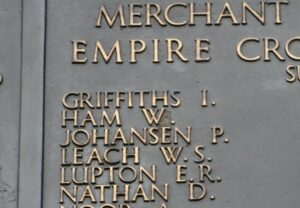
Lewis Reginald Isaac, Sergeant, 748158, Royal Air Force Volunteer Reserve. Reg was the son of James and Blodwen Matilda Isaac, of Llanelly. He served as a pilot with 64 Squadron, Royal Air Force, which was a fighter unit, equipped with the Supermarine Spitfire I, based at RAF Kenley. On 5 August 1940 Reg was sent up with his Spitfire, Serial L1029, with five other fighters of 64 Squadron, to escort a convoy which was steaming through the English Channel. German bombers were spotted heading towards the convoy, and while the Spitfires were intent on hunting down the bombers, they were attacked by German Messerschmitt fighters. Reg was shot down over the channel during the dogfight that followed. He was 24 years old, and is commemorated on the Runnymede Memorial, Surrey.
Brynley Howard Lewis, Private, 3911446, South Wales Borderers. Brynley was the son of Jenkin and Polly Lewis, and the husband of Pearl Louisa Lewis, of Llangennech. He served with the 6th Battalion, South Wales Borderers. The Battalion was raised in Glanusk Park, Breconshire, in July 1940, and trained as an infantry regiment until April 1942, when it was converted to the 158th Regiment, Royal Armoured Corps (The South Wales Borderers). The battalion sailed for Bombay in October 1942, and trained in India as a tank regiment until March 1943, when it was reconverted to infantry, and fought as such in Burma, capturing the Mayu Tunnels in March 1944. Brynley was killed during the Battle of Sahmaw Chaung, on 5 August 1944. He was 27 years old, and is buried at Taukkyan War Cemetery, Myanmar. Brynley is not named on the Llangennech Memorial.
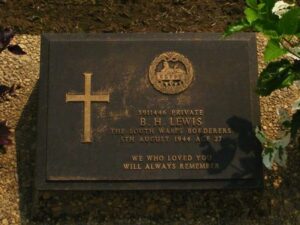
Fred Newsome, Company Quartermaster Sergeant, 4685806, Coldstream Guards. Fred was the Husband of Sarah Newsome, of Llangennech. He served with the 2nd Battalion, Coldstream Guards. The battalion was in France with the BEF at the outbreak of war, and fought in the retreat to Dunkirk. During November 1942 they embarked at Glasgow for North Africa, and landed at Algiers on 22 November, attached to the 1st Guards Brigade, and moved Tunisia, taking part in the Tunisian campaign. Fred was killed in Tunisia 1 February 1943. He was 34 years old, and is buried at Medjez-El-Bab War Cemetery, Tunisia.
John Howard Rees, Sergeant (Air Gunner), 1580581, Royal Air Force Volunteer Reserve. John was the son of David John and Harriet Rees, of Llanelly. He served as an air gunner with 106 Squadron, Royal Air Force, which was a heavy bomber unit, equipped with the Avro Lancaster III, based at RAF Metheringham. On 27 April 1944 John was flying aboard Lancaster III, Serial JB601, which was part of a large flight bound for the Schweinfurt ball bearing factory in Germany. Twenty one Lancaster’s were lost on the raid, including JB601, which was brought down over France. John was 31 years old when he died that day, and is buried alongside six of his fellow crewmen at Laneuville-A-Bayard Churchyard, France.
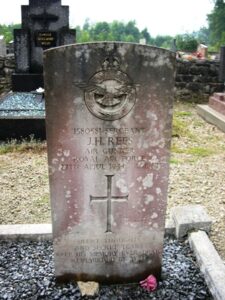
Leonard Gordon Rooke, Craftsman, 5502663, Royal Electrical and Mechanical Engineers. Leonard was the son of Thomas Gordon Rooke and Winifred Alice Rooke, of Llangennech. He served with the Royal Electrical and Mechanical Engineers, and was attached to the 98 (The Surrey and Sussex Yeomanry) Field Regiment, Royal Artillery. The regiment took part in the fighting in the Western Desert, before taking part in the invasion of Sicily, then the invasion of Italy. Leonard was killed in Italy on 17 January 1944, probably while serving as a crewman in a tank. He was 25 years old, and is commemorated on the Beach Head War Cemetery, Anzio, Italy. Leonard is not named on the Llangennech Memorial.
Glyn Samuel, Private, 14623539, Dorsetshire Regiment. Glyn was the son of Oswald and Gladys Samuel, of Llangennech. He served with the 1st Battalion, Dorsetshire Regiment. The Battalion was part of 231st Infantry Brigade, and served at Malta, before taking part in the landings at Sicily and Italy. It was then recalled to Britain, and landed on Gold Beach on D-Day, fighting the Brigade in the Battle of Normandy, and the subsequent drive through Northern France into Holland. Glyn was killed in Holland on 3 October 1944. He was 19 years old, and is buried at Jonkerbos War Cemetery, Netherlands. His brother Towyn also died on service.
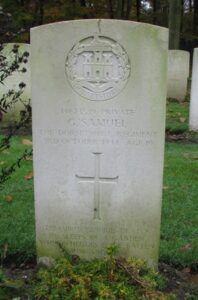
Towyn Samuel, Craftsman, 10587879, Royal Electrical and Mechanical Engineers. Towyn was the son of Oswald and Gladys Samuel, of Llangennech. He served with the Royal Electrical and Mechanical Engineers, based at the 6th Guards Tank Brigade Workshops, stationed between Lenham and Charing. Towyn was one of 46 men killed when a V1 flying bomb hit the workshops on 24 June 1944. He is buried at Lenham Cemetery, England. His brother Glyn also died on service.
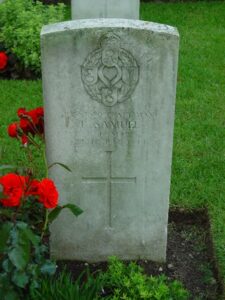
Trevor Selwood, Leading Aircraftman, 950351, Royal Air Force Volunteer Reserve. Trevor was the son of William Thomas and Martha Ann Selwood of Llangennech. He served with the Royal Air Force. No further details are currently known of him, but he died on active service at Stamford, Lincolnshire on 28 October 1941, aged 21. Trevor was brought home for burial at Llangennech (Bryn Seion) Presbyterian Chapelyard.
William Williams, Private, T/111418, Royal Army Service Corps. William was born at Llangennech in 1911, and was the Husband of Edith Mabel Williams, of Ditherington, Shrewsbury, Shropshire. He was in France at the outbreak of war, attached to the 5th Division Ammunition Company, Royal Army Service Corps. William was killed during the retreat to Dunkirk on 31 May 1940, aged 28. He is commemorated on the Dunkirk Memorial, France.
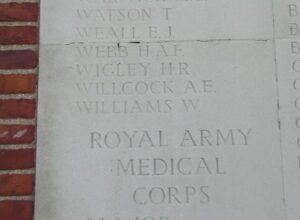
Korean War, 1950-1953
Richard Arnold Lavender, Lance Corporal, 22666363, Royal Fusiliers (City of London Regiment). Richard was born at Llangennech on 15 February 1934, the son of Edward Richard Lavender and Elizabeth Ann Lavender. He served with the 1st Battalion, Royal Fusiliers, alongside a man called Maurice Micklewhite, later to become famous as the actor Michael Caine. The battalion arrived in Korea during July 1952, attached to the 28th Commonwealth Brigade, 1st Commonwealth Division. The division had been formed as part of the UN force sent to Korea after the Korean War had began to escalate, with the fear of a Third World War looming. The 1st RF took part in fighting in Korea from November 1952 onwards, and towards the end of June 1953 took over a position on Hill 355. Richard was killed during heavy fighting here on 28 June 1953. He has no known grave, and is commemorated on the UN Wall of Remembrance, at Pusan, Korea.